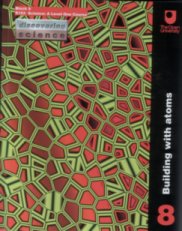S103 Discovering Science Diary
Block 8
[ Block 1 ] [ Block 2 ] [ Block 3 ] [ Block 4 ] [ Block 5 ] [ Block 6 ] [ Block 7 ] [ Block 9 ]
26th May
I actually finished this block some weeks ago (slow in catching up with these webpages). I thought it was better than Block 6, but that was only because of the Organic Chemistry, which is much more straightforward than the other stuff! I have a few problems with pharmaceuticals though, so hopefully that won't crop up all the much in the future! TMA06 just needs a tiny bit of tinkering to the last question and then it will be ready to go. (I have to admit though, that I've forgotten half of this block already ... )
27th March 2003
I've just turned to the opening page of this block. Can't wait to get into it! :) There is absolutely plenty of time though, as the next lot of materials don't get sent out until May. Good job too, by the look of it! (By the way, this is the worst book cover so far!)

Onwards to Block 9
Back to Block 7
Back to Block 6
Back to Block 5
Back to Block 4
Back to Block 3
Back to Block 2
Back to Block 1
Back to S103 | Block 8: Building with atoms Contents
Electrons in atoms: a look forward and a look back
Electron configurations
Building atoms
Explaining the Periodic Table
An electronic tour of the Periodic Table
The mini Periodic Table for the typical elements
Chemical bonding: ionic compounds and molecular substances
Ionic compounds
Molecular substances
Ionic compounds, molecular substances and the Periodic Table
Explaining chemistry through electron structure
Simplified electron structures
The noble gases revisited
Ionic bonding
Covalent bonding
Electronegativity
Chemical reactions and energy changes
Chemical change and internal energy
Chemical reactions that release or absorb heat
Quantitative information: enthalpy changes
Enthalpy changes: delving deeper
Water
Solubility in water
The melting and boiling temperatures of water
Acidic solutions
Chemical equilibrium
Le Chatelier's principle
Gaseous reactions
Chemical equilibrium in solution
Carbon dioxide gas and water
Acids and bases: a quantitative view
The ion product of water
A universal scale for acidity and basicity
Rates of chemical reactions
Varying the rate of reaction
Getting together: the effect of concentration
Energy and reaction
The effect of temperature on the rate of reaction
Help from outside: catalysts
Supplying nitrogen for crop production: a case study
Why do crops need nitrogen?
Using chemistry to fix nitrogen
The Haber-Bosch process
The chemistry of carbon compounds: crude oil
A brief history of crude oil
What is crude oil?
Oil as a fuel: petrol
What else is oil used for?
Important chemical feedstocks
Functional groups and their reactions
The functional group approach
Characteristic reactions of functional groups
Crude oil: final thoughts
Polymers
What is a polymer?
Properties of polymers
Building links
What has this got to do with crude oil?
Pharmaceuticals
How aspirin was discovered
How drugs work
|
|
